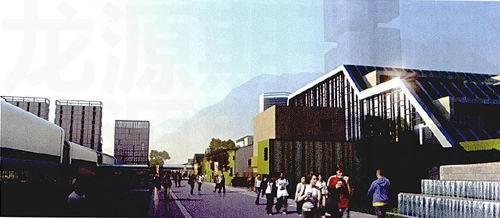The Conference and Exhibition Industry in Guiyang:A New Engine of Growth
CHEN SIJIA
The conference and exhibition industry holds great promise in modern economies and countries that are well-positioned to tap into this can reap rich rewards. A good example is Davos, the small Swiss town in the Alps. Site of the World Economic Forum, the revenues and fame of this sparsely populated town are quite disproportionate to its size.

This has obviously inspired Guiyang, a scenic hilly city in Guizhou Province. Like Davos, Guiyang is a tourist resort known for its otherworldly serenity, natural beauty and an all-year long salubrious climate. Its karst landscape, which covers 85 percent of the citys territory, creates splendid canyons, peaks, limestone caves and waterfalls, and hot springs can be found in its every district and county. With a long history of human activity and a mixed population drawn from various ethnic groups, Guiyangs cultural appeal is another big advantage.
Well-Connected
A meeting point of central, southern and southwestern China, Guiyang lies 500 kilometers from Chongqing, Chengdu, Kunming and Nanning. It is also close to a number of trans-provincial expressways, such as Xiamen-Chengdu, Guiyang-Guangzhou, Shanghai-Kunming and Lanzhou-Haikou, and several railway trunk lines, including the Guiyang-Guangzhou, Chengdu-Guiyang, Chongqing-Guiyang and Shanghai-Kunming lines.
Guiyang hopes these factors will draw exhibitors and conference organizers. To enhance its appeal to this sector, the city is building a huge conference and exhibition center in the downtown area, close to the municipal government compound. With a total floorage of 976,300 square meters, the center will be the largest and best appointed of its kind in southwestern China. The main building is scheduled to be completed at the end of the year, and the whole project at the end of 2010. The total investment is estimated to reach RMB 2.9 billion, most of which will come from the Zhongtian Urban Development Group Co., Ltd.
The sprawling Guiyang International Conference and Exhibition Center will have exhibition halls, a commercial district, a five-star hotel, recreational sections and apartment buildings.
The 100,000-square-meter exhibition section will be able to host 4,113 standard booths indoors and 1,562 outdoors, with the capacity to hold more than 1,000 domestic exhibitions and 60 international exhibitions annually.
The 40,000-square-meter conference section comprises two auditoriums of 3,500 seats each, a hall with simultaneous interpretation service, several minor chambers, business discussion rooms, VIP rooms and a plush theater.

With a floorage of 50,000 square meters, the centers five-star hotel is designed to have 500 rooms, including 13 president and minister suites, done up in distinctive ethnic décor.
The commercial district will include a shopping mall, a bookstore, a childrens playground, a cinema, a square and a sports and recreational zone.
The center lies close to two light-rail lines and multiple highways that extend to every part of the city, including Guiyang Airport, and offer connections to the many inter-city and inter-provincial expressways and railways passing the area.
Preferential Policies
“The conference and exhibition industry is capital-intensive, but the returns take time. Preferential policies are key to catapulting the Guiyang Center into full operation,” said Luo Yi, director of the Investment Promotion Bureau of Jinyang New District, where the center is located. To nurture its conference and exhibition industry, the local government is offering subsidies of RMB 100 to 300 per booth to indoor exhibition organizers, with the subsidy ceiling for a single exhibition set at RMB 100 million. Outdoor events are also eligible for varying amounts of government subsidies.
Under a partnership between the government and Zhongtian Group, the lead investor, the center will offer dedicated assistance with such processes as bookings, boarding and sightseeing tours. It promises “nanny-style” service throughout a clients stay in the city.
“The conference and exhibition industry is new to China, and therefore not very sophisticated, said Luo Yuping, general manager of Zhongtian. “So it is important to build a talent pool. The first step is training. And the second is importing talented people and authoritative agencies from outside the company as well as the city. It is a fatal mistake to be arrogant or xenophobic. We are open to the idea of hiring a management company to run the project.”
In Guiyang, the upcoming gargantuan conference/exhibition center is viewed a new engine of growth for the local economy. As the experts say, for every one dollar made at an exhibition, nine are generated in businesses elsewhere.

